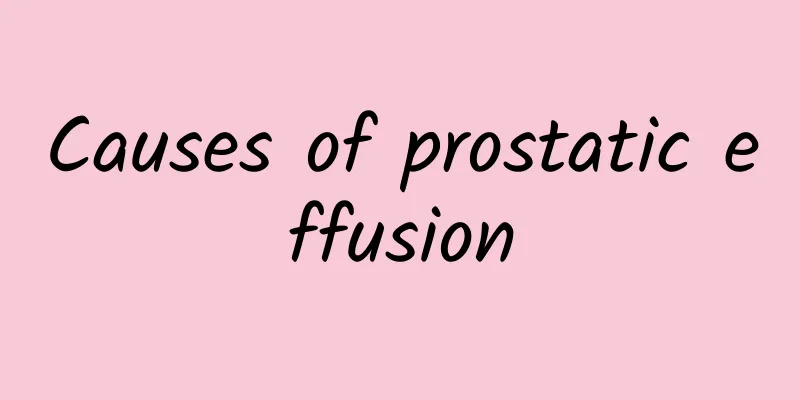If something goes wrong here, it will lead to hundreds of orgasms a day.

|
Orgasm is the most wonderful and indescribable psychological feeling in life. But for Mr. Lin, a 52-year-old man from Fuzhou, hundreds of orgasms a day are too much for him. Hundreds of orgasms a day, right? It's true. When Mr. Lin was young, his "little brother" would always raise his head excitedly, and he would have repeated orgasms. The bad thing is that this phenomenon did not subside with age, but became more and more intense. "Brother Lin" is like taking stimulants every day, he is trembling all day long, there is a fire burning in his urethra, and it feels hot and spicy. Sometimes he has hundreds of such "orgasms" a day. In April, Mr. Lin, who was in great pain, was diagnosed by Dr. Huang Xianhui, director of the Pain Department of Fuzhou First Hospital, that the orgasm syndrome originated from damage to his "sacral nerve". Now his condition has improved significantly after treatment. Sacral nerve injury Sacral nerve injury is a type of pathological pain, which is pain directly caused by damage or disease of the somatic sensory nervous system. Why does sacral nerve damage cause pathological continuous orgasm? This is closely related to the distribution of pudendal nerves. The pudendal nerve is a somatic nerve system that originates from the 2nd to 4th sacral cord segments, contains sensory, motor and postganglionic sympathetic nerve fibers, and branches into the subhemorrhoidal, perineal and dorsal penis nerves. This disease is difficult to diagnose, and patients are too embarrassed to speak up, so it is easy to misdiagnose. In clinical practice, male patients are relatively rare, and the sacral nerve has a lot of fibers, so it is difficult to find the diseased nerve. If a patient finds burning, electric shock, or needle-like pain in the anus, perineum, or genitals, but cannot be diagnosed, the sacral nerve should be checked in time. Four nerves in the sacral nerve are closely related to sex The entire sacral nerve and the anterior branch of the coccygeal nerve form the sacral nerve complex, among which four nerves are closely related to sex. They control human sexual activities and sexual feelings. Specifically, they are the following four nerves: 1. Pudendal nerve: The pudendal nerve, along with the internal pudendal artery and vein, exits the inferior foramen of the piriformis muscle, bypasses the sciatic spine through the lesser sciatic foramen and enters the sciatic rectal fossa, and branches forward to distribute to the muscles and skin of the perineum and external genitalia. 2. Anal nerve: Anal (subrectal) nerve is distributed in the external anal sphincter and the skin of the anus. 3. Perineal nerve: The perineal nerve is distributed in the perineal muscles and the skin of the scrotum or labia majora. 4. Dorsal penile nerve: The dorsal penile (clitoral) nerve runs on the back of the penis (clitoris) and is mainly distributed in the skin of the penis (clitoris). How can I feel sexual pleasure with a sacral injury? According to Dr. Huang Xianhui, director of the Pain Department of Fuzhou First Hospital, one of the branches of the sacral nerve is the "switch" that controls orgasm. Damage to the sacral nerve will cause continuous contraction of the anus, perineum, and genitals, and the patient will feel pain, a bit like an orgasm. There are currently about 90 million patients with pathological pain such as sacral injury in my country. A considerable number of patients have not received effective treatment, which significantly reduces the quality of life of patients. Long-term pain will not only affect the patient's sleep, work and living ability, but also increase the incidence of emotional disorders such as depression and anxiety. A major feature of pathological pain is the long course of the disease, which generally lasts more than three months. The pain persists after the cause of the pain is eliminated or controlled. Such patients usually experience local or regional pain without any trauma or injury stimulation. The four main characteristics of pathological pain are: 1. The painful area may be caused by slight touch, such as contact with clothes or sheets. 2. Slight changes in temperature induce pain. 3. The pain response to normal pain-causing stimuli will be enhanced; at the same time, it will manifest as pulling pain, electric shock pain, needle-like pain, burning pain, distending pain, numbness pain, etc. 4. Abnormal sensations, dull sensations, itching, or other uncomfortable feelings. |
<<: Most people don't know how useful women's private belongings are to men.
>>: Why is there foam in men's urine?
Recommend
Deer penis soaked in wine to enhance sexual performance
Everyone should know about deer penis, especially...
Symptoms of low testosterone in men, treatment methods for low testosterone
Low testosterone will trigger a series of reactio...
Is male baldness due to kidney deficiency?
Generally speaking, hair loss is more common in m...
What are the effects of phimosis?
When it comes to male diseases, the most common o...
Pay attention to anal cramps, it may be spastic anorectal
With the development of society, people are under...
Do you know why sperm is thick?
For male friends, if the sperm process is not a g...
What is the purple-red color of the glans?
The glans is an important part of the male reprod...
Why is sperm red?
Under normal circumstances, men's sperm is us...
What are the negative effects of not ejaculating on the body?
Today's working environment is becoming more ...
What are the medicines for treating male urethritis?
I believe everyone is familiar with urethritis. B...
Men should know in advance! Women’s criteria for finding a husband
Nowadays, the post-70s generation has left the ma...
Male genital herpes symptoms
If male friends do not pay attention to maintaini...
The difference between male circumcision and uncircumcision
Most male friends will have the problem of foresk...
How can men lose chest fat?
Many men often do not pay attention to exercise, ...
Can men shave their armpit hair? Actually, it is not necessary.
Armpit hair is the most abundant hair on the huma...









